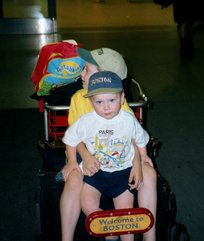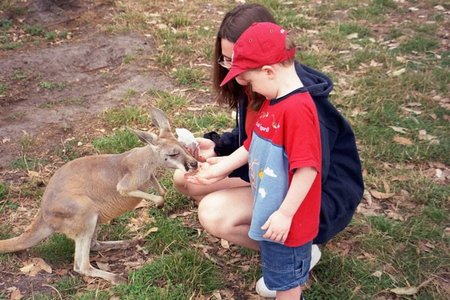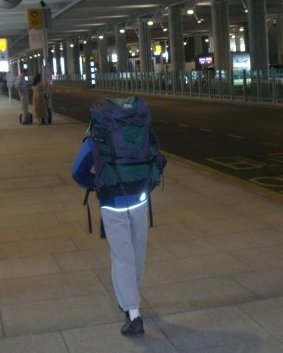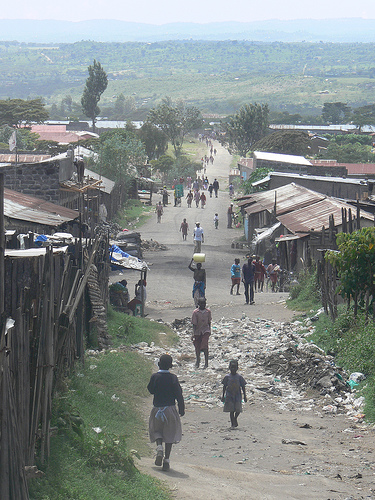
My friend J. – who’s a mom of a delightful toddler and is currently pregnant with her second child – likes to travel with her son (OK, and husband too), and is looking forward to traveling more with her children. Recently, she asked me an interesting question about traveling with children: When we travel, what should I expect from my son in terms of behavior and activities which he will enjoy as he gets older? We agreed that this was a very broad question and hugely influenced by the personality, disposition and developmental maturity of the child in question. So J. followed up with some more specific questions. I’ve tried to answer these based on my own experiences of traveling with my children. If you have questions on this topic, please leave them in the comments below and I’ll try to answer in a subsequent post.

When can I expect my son to remember a trip?
Before he was four, my oldest son had visited the U.K. and Ireland a number of times, Greece, Fiji, Australia and Peru. I know he doesn’t remember New Year in Lima or feeding kangaroos at a petting zoo outside Melbourne, but I know that he thinks he does because of stories we’ve told about those trips and the photos we took. Conversely, we visited New York when he was five-and-a-half and he has very clear memories of that trip. (Childhood amnesia or the paucity of memories of experiences prior to your fourth birthday is a psychological phenomenon.)
When should I expect to do a trip without a stroller?
I frequently traveled without a stroller – even when traveling with a preschooler and a toddler. This is a choice which is a matter of personal preference. I used a Baby Bjorn when my children were infants, and a Kelty Kids Carrier for hiking and travel when they were preschoolers (this is what we used in Peru and in France). I had a cheap, Kolcraft stroller which I used (rarely).
Again, I stress, this is a personal preference based on your comfort level in using a carrier, whether a hard-frame such as a Kelty or a soft-frame such as an Ergo, and also on whether or not your child is used to being carried and so is likely to nap in a carrier or not – since facilitating your child’s naps without having to stay in a darkened hotel room is pretty key to everyone having an enjoyable trip.

At what age can a child pack and carry their own suitcase?
My now 13-year-old older son packed all his own bags for a recent school trip. Yay! This was a definite first. I’ve been encouraging my kids to pack for themselves since he was at least six or seven. Packing lists are a great help in this – although the best packing list in the world is not going to help your child stay focused and pack! Using a packing list early helped my children become more self-sufficient in their packing. I also “pre-packed” by taking out the clothing they would need to pack and leaving in an obvious place for them to find (on the bed, by the empty suitcase, etc). Neither of these things helped in any way with their habit of wanted to pack their entire bedroom for a trip.
Usually, I pre-pack by doing laundry and making lists in the days before we travel and I set aside time on the last day before the trip to pack with the kids. When they were preschoolers this meant having them pack with me for ooh, maybe 10 minutes before they lost interest and I turned on PBS kids to keep them entertained while I packed. At five, they were engaged packers and pretty good at finding the things on the packing list – but still highly distractible. By seven, I could trust that they would pack everything on the list but would ask them to keep the suitcase open for me to check. And, as I said, at 12 I didn’t even check the contents of the bag.
While it may seem discouraging that you’ll be packing for the next few years for your child, the suitcase story is much better. An ambulatory toddler can pull a kid-sized suitcase. A preschooler will likely insist on pulling his or her own suitcase and by elementary school ages, most kids can pull along a carry-on-sized suitcase pretty easily. When we were in Italy last year, since we were traveling by train, we all used backpacks – even BigB who was seven at the time.
One thing to keep in mind before you pack that cute little toddler-sized suitcase is how you’re going to carry it and your child if he or she is asleep when you arrive at your destination. If you’re flying internationally, this can mean juggling a child and a suitcase which is difficult for you to carry through customs and passport control – not fun.
How old will my son have to be before he will enjoy an art museum?
This is probably the hardest question for me to answer. Art galleries are not really my thing. I’ll make a detour for interesting walks and gardens and I love classical music and opera, but I sometimes find that I forget to leave time to visit art galleries – at home or while traveling. Hence my children haven’t visited many. Also, one of my boys has ADHD which means we are significantly more likely to plan outdoor activities or at the very least, stick to kid-friendly aquariums, science museums and the like. I felt as if I was taking my life in my hands by bringing my boys to Scuola di San Rocco in Venice last June (the boys were 12 and 7). It was a tremendous success – as measured by CAM’s exclamation on Tintoretto’s prodigiousness and their overall appreciation of the size, scale and impact of the works on display. We had a great visit to SFMoMA last November and we’ve since visited the Seattle Art Museum (on a wintry Saturday afternoon) also.
Check out DeliciousBaby for successful stories of visits to art museums with preschoolers.
My general advice with respect to museums and other more adult attractions is this: take advantage of naptimes while your child is an infant or toddler – it’s a perfect time for you to enjoy the art in peace and quiet. With an active preschooler, if you think he or she will be able to focus for long enough to appreciate one or two paintings, then go for it. Even if you dash through the galleries and leave without really seeing much yourself, it’s still a success – and then build on that. If you can, visit to a local gallery, look at paintings online, and use “find-the-whatever-in-the-paintings” games to engage your child at a visit to a larger gallery. One day, usually between seven and eight – or older for children with attentional issues – your efforts will pay off and you’ll be able to sit, as I did, admiring your child admiring a painting and have a perfect parenting moment 
Current Giveaways: Win a GoGoBabyz Infant Cruizer
Subscribe to this blog using RSS, email or follow me on Twitter.







